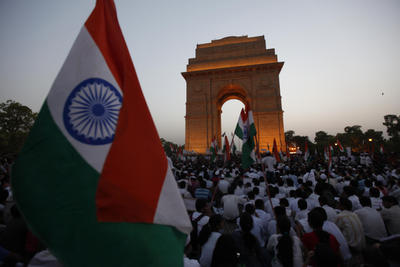Sadly, the telecommunications scandal is not the only one that is currently haunting the Indian political scene. A host of others — ranging from dubious and inflated contracts for the Commonwealth Games held last year to corporate influence peddling for favourable news reports to retired military personnel caught in questionable but lucrative real estate deals — are wracking the land. This web of scandals, many are lamenting, are deeply corrosive of India’s democracy and could lead to a loss of public faith in the country’s democratic political institutions.
Many politicians and commentators on the left of India’s political spectrum are attributing the growing spate of corruption to the fitful opening of India’s economy. Such an argument, though with a small kernel of truth, is only superficially attractive. Corrupt practices that reach into high places are hardly the preserve of India’s recently liberalised economy. They easily hark back to the putatively halcyon days of what the late economist Raj Krishna mordantly referred to as the ‘license, permit, quota raj’ — the era of a labyrinthine set of controls, quotas and tariffs that had bound the Indian economy.
Indeed there is much evidence that the previous economic dispensation created structural incentives for graft and malfeasance. Poorly paid but extremely powerful bureaucrats had compelling grounds to seek rents from entrepreneurs seeking to expand plant capacity and obtain equipment or dispense with redundant workers. If anything, liberalisation has actually curbed such petty and rampant rent-seeking as many of those legal constraints have been sloughed off.
The widespread awareness of this unholy nexus helped spawn a political culture that pervaded much of the Indian political system. As bureaucrats in lower strata of administration were aware of the pervasive corruption in higher realms, they too found ways to extract their own pounds of flesh. In turn, corrupt behaviour found its way down to the most menial government employees. Bribes simply became the currency of everyday transactions extending from the awarding of major governmental contracts and licenses to obtaining preferential treatment in obtaining college admissions.
If corruption, both petty and large-scale, had long been present before the advent of economic liberalisation, why does it appear that India is now more ridden with this scourge than ever before? Several answers can be adduced to explain the seeming surge in corruption and its disturbing implications for the future of India’s democracy.
At one level, the evidence of the existence of widespread corruption is simply a function of better and more competitive reportage. Since the disturbing days of Prime Minister Indira Gandhi’s ‘state of emergency’ of the late 1970s, when the bulk of the Indian press crawled before her dictates, it has come a long way. Perhaps because of its rather abject role during that time span it embarked on a pathway of serious investigative journalism. Not surprisingly, it found a ready audience amongst India’s middle class, with whom these concerns about corruption resonated. With the expansion of the middle class over the past decade and the dramatic growth of electronic media the appetite for revelations of malfeasance has expanded. As television channels have had to compete for viewership they have also been prone to sensationalise stories of corruption in high places in their quest for better ratings.
Bluntly put, India’s institutional capacity has not kept pace with its phenomenal economic growth. Many of India’s laws are antiquated, its regulatory and oversight mechanisms inadequate and its bureaucratic procedures too slothful to meet the challenges of a wholly new economic order. In fairness, the country has created some new regulatory organisations, the Security and Exchange Board of India, (SEBI) which has provided decent oversight over the burgeoning stock market being one example; yet SEBI was created only in the wake of a major stock market scandal.
This is indicative of the crisis-driven nature of India’s willingness to undertake serious political and institutional reforms. Only in the aftermath of major crises has the Indian state finally recognised that existing institutions and organisations are fundamentally wanting and they are in compelling need of drastic reforms. For example, it was the unprecedented fiscal crisis of 1991 that ultimately contributed to the transformation of India’s economic policies.
Given the Indian state’s propensity to tackle much-needed reforms only after major crises, one may now finally witness a nation-wide crusade against corruption. A citizenry that has long endured having to pay bribes to local policemen to avoid traffic fines and watch avaricious politicians siphon off public funds at will may have finally reached the limits of their tolerance. Public disaffection with endemic corruption has, in all likelihood, reached an all-time high. Faced with this tide of growing public indignation the country’s political leadership might finally take heed and address this toxin that has so plagued the body politic.
Sumit Ganguly is the Rabindranath Tagore Chair in Indian Cultures and Civilizations at Indiana University, Bloomington.

